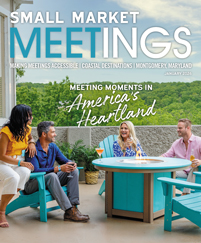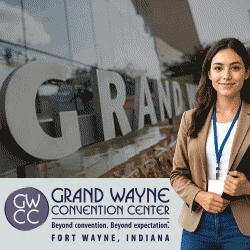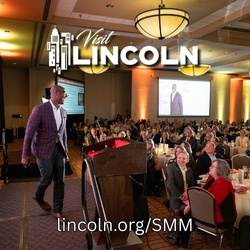Rachel Crick recently spoke with Alexis Dick, event planner at Heating, Air-Conditioning, Refrigeration Distributors International on planning out-of-the-box events.
Alexis Dick is an event planner at Heating, Air-Conditioning, Refrigeration Distributors International (HARDI). She graduated from Ohio State University in 2022 with a bachelor’s degree in strategic communication before gaining corporate planning experience as an engagement and events specialist at Bath and Body Works. She’s a certified MPI member and a member of PCMA 20 in Their 20s, Class of 2024. She has additional planning experience through her volunteer work with several nonprofits around Columbus, Ohio.
Q: What have you noticed changing about attendee preferences and the event landscape as a whole?
A: Specifically over the last year at HARDI, looking at our registration data, a lot of attendees tend to register super early or super late. They’re ready for launch, or they’re coming in at three weeks out from your conference. That can be stressful for a planner, because more than likely our hotel blocks, meal guarantees and other event components will be closed. That number for us has been fluctuating, but roughly 30% are registering early and 30% are registering late, which is a pretty big chunk. We’ve also noticed a drastic increase in attendance. Most people post-COVID are prioritizing getting out of the office and working on professional and personal development. They feel that networking with individuals and exploring through their company is beneficial to them.
Q: Events have components that are required, such as keynotes or breakout sessions, but sometimes there’s more flexibility. When do you know it’s time to think outside the box rather than following a more typical run of show?
A: There are a few points you can look at. One is thinking about post the previous event, when you’re looking at data and attendee feedback. That is the prime time to ask not only the stakeholders and planning team that were involved, but you have feedback right there. Ask about what they loved and what they didn’t like. That way you have a starting point whenever you go to have your kickoff call. The other point is halfway through the planning phase, three to six months out, figuring out, ‘We have the core agenda identified, we have the basics — what value could we add to this to make it more engaging?’ That comes too when you’re thinking of a marketing plan: How are you advertising this event and telling people this is exciting?
Q: How does technology, including AI and certain software, help you think outside the box during the planning process?
A: When you’re planning an event, usually as a planner you get stretched a little thin, especially during launch, or while pushing it out to attendees, and when you’re on site. Sometimes it can feel overwhelming, or you don’t want to hand things off, or you’re worried about keeping things consistent. Checking off smaller boxes opens up a lot of time. When I’m building the app and getting ready to send it to attendees, I do use a lot of AI and ChatGPT, as well as built-in AI writing tools. The biggest thing to remember is you can’t have a shortage of information when planning an event; you have your whole team, multiple stakeholders and few employees. So, we use software that makes information available to people as they need it, with an access portal, up-to-date reporting around attendees, revenue and expenses. It eliminates the one-off questions.
Q: What are some innovative or out-of-the-box ways you create engagement for attendees?
A: Within the framework of any conference, there’s an opening and closing reception. But when it comes to networking, it’s more than drinks and food. People are going for a connection. Something you can do is a themed reception, whether that’s sports-themed or Gatsby-themed. We get a very good response from our attendees. They don’t all 100% get engaged, but it’s a talking point and makes it fun. It breaks the ice when people get there, so I would encourage people to figure out how they can develop their opening and closing receptions. I encourage people to put themselves in the attendee’s shoes. If you’re sitting there and listening to ideas in a meeting and thinking ‘this is kind of boring,’ the attendee may also think that.
Q: What nontraditional ways do you encourage more engagement around sponsorships?
A: Lots of people sponsor, and the goal is to drive revenue for the event or offer a unique experience. When what you see about that sponsor is a giant sign or the name is on the table in a stanchion, you recognize their logo, but it’s way more fun when they get to engage with individuals at the conference. Some things we’ve done are a doughnut wall. Attendees grab a doughnut and talk to the sponsors. It increases traffic to their table, and people like to pose with it, so the social media imprint you get adds way more value to the sponsor. We’ve also done a little exhibit, a tabletop event, photobooths for sponsors, a happy hour and even golf simulators during high traffic times. It’s engaging, and there’s something to bond over.













